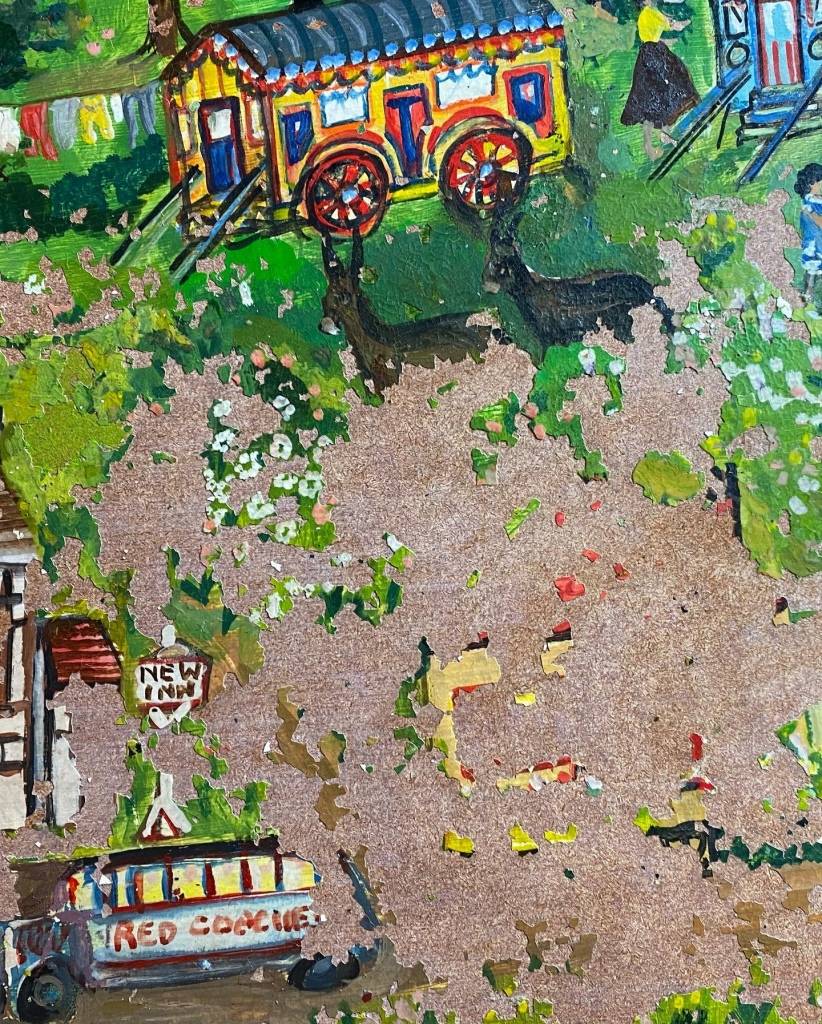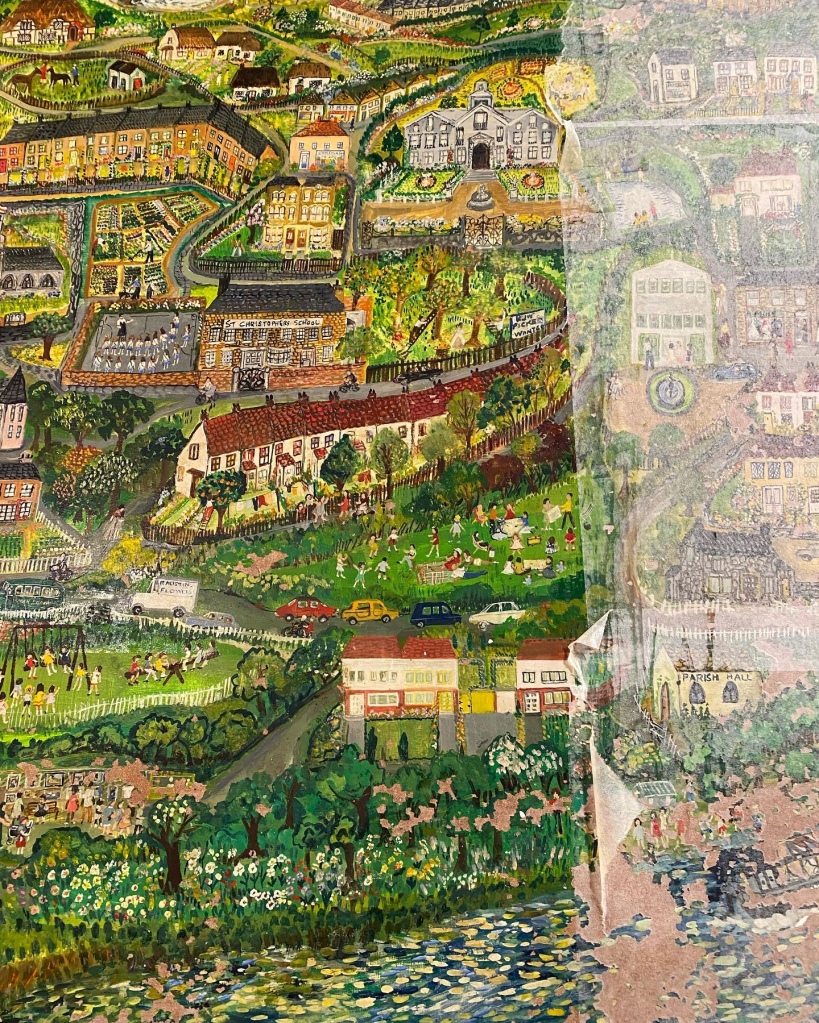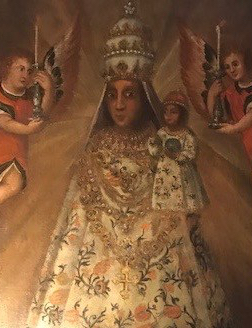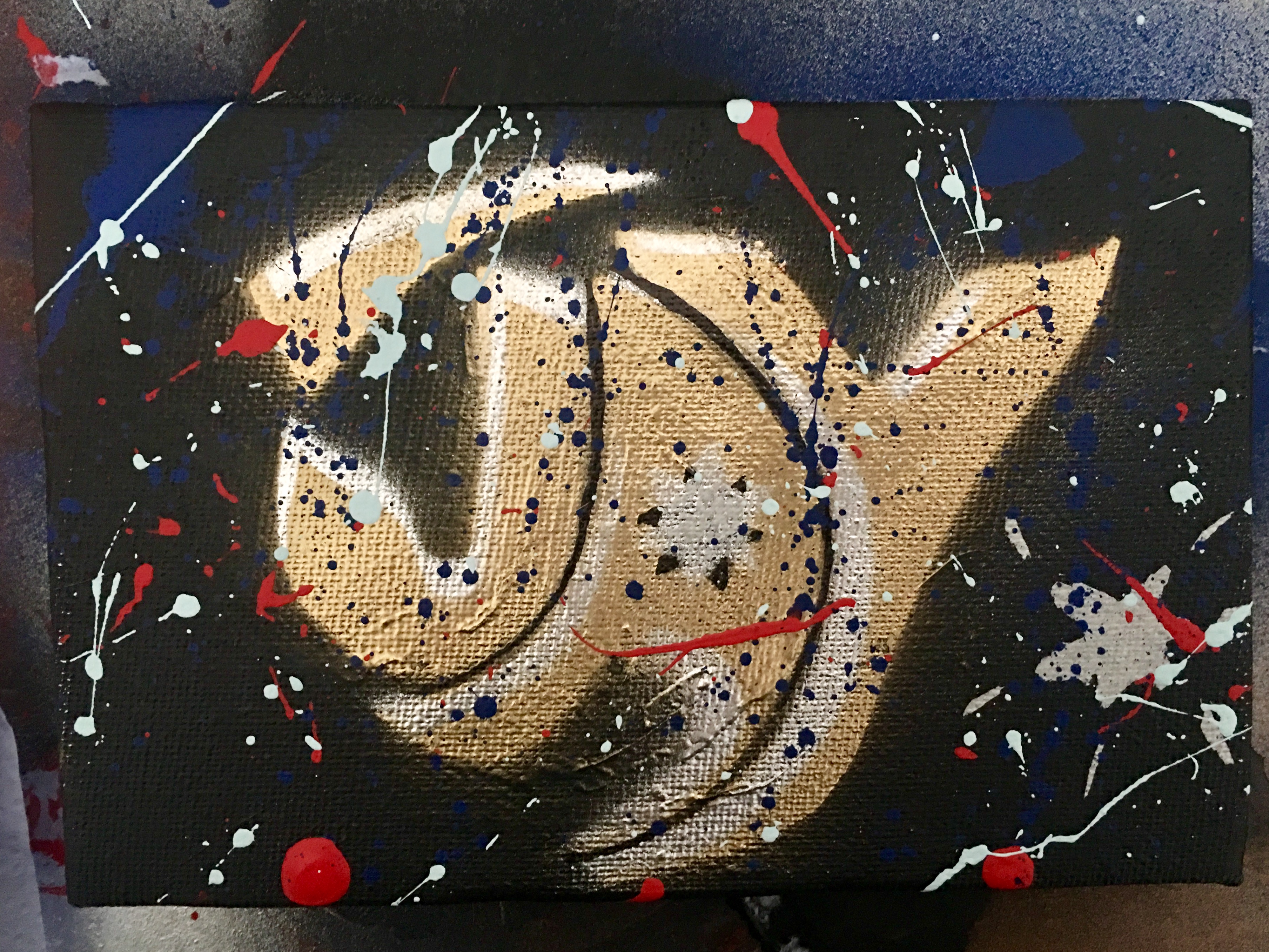An interesting & challenging painting came in to ‘The Repair Shop’. London born artist Emily Crisp (1912-1974) developed her style as a ‘Primitive’ artist finding great success amongst 60’s era pop culture icons. This particular painting contains many memories of her own family and childhood woven into imaginary landscapes. Technical issues beset the image; Emily painted her intricately observed masterpiece on tempered hardboard. Tempered hardboard is made by impregnating one side with (usually) linseed oil & heating it to high temperatures making it waterproof and smooth. Preparing this as a surface to paint on is not a great choice, but the dimensions and economies made it Emily’s preferred support. Long term issues resulted in extensive flaking paint as the bond between a tempered surface and a water-based paint (likely gouache?) is at best challenging and as we can see it is basically shelling off left, right & centre.

My concerns were how to reattach the paint surface and then how to seal and retouch. In a nutshell I used a ‘heat-seal’ adhesive. There are 3 types of adhesives, you’ll likely know all types, but within each there are many, many, MANY specialities of materials used for sticking things together. If you consider consolidating cave paintings for example, the requirements for an adhesive are to be very different to those required for lunar module tiles or post-it notes or fractured bones. The three types are:-
1. ‘solvent based’ e.g’s pva’s, animal/veg glues & things like water based school glues
2. ‘reaction adhesives’ e.g’s epoxy’s/ superglues
3. melt-freeze adhesives, the simplest of which might be waxes & shellacs.
Adhesives are a vast area of research into materials – this is just a taster, stick with it! ;)))
In this case I used a specific adhesive in the ‘melt freeze’ group – Lascaux 375. Its a thick translucent gel which needs to be heated to flow, allowed to dry i.e. the solvent which enables it to flow and create the required % dilution you need, has to evaporate leaving a dried layer of the material which is ultimately going to make the bond. The dried layer of adhesive is then reheated using my thermostatically controlled lining iron to activate the dried polymer film to create a bond. Technically these materials are superb but you have to know how to use them to – not least – exploit their versatility.
Lascaux 375 used to be called Beva 371 – ‘B’ being Gustave Berger the scientist & conservator who invented it back in the 1970’s, the ‘eva’ (isn’t his wife) is ethylene vinyl acetate a flexible polymer suspended in a solvent….. anyway, it worked brilliantly. It can be manipulated by diluting it to requirements and using heat matched to paint surface tolerances and to make it flow. This isn’t just ‘dip, strip & stick’. Adhesives are multi-billion dollar businesses and research centres, fantastic things are happening in the world of sticking things together.
I LOVED this painting, it was a challenge for me, it was thrilling. I get to use materials and techniques I trained with, in an environment that is remarkable, standing in front of a camera recording every step is …. well, I guess you can guess.
Regarding the retouching, again not without its heartbeat moments. I used acrylics because they have the body to fill the shallow losses and a great intensity of pigment. They’re not so good when it comes to detail work because they’re a bit too thick, can be thinned but then they’re too transparent …. and so on, plenty of manipulation going on.
Acrylics are great because they dry quickly and there’s no colour change on drying or ageing – unlike oils that take forever to dry & change colour once they are dried and continue to change over time becoming more transparent for example, why changes made by the artist – pentimenti – become visible.
The varnish, well another technicality. I love varnishes, they can do lots of things depending on their molecular structure. I chose a high molecular weight synthetic resin called Paraloid B72 because I wanted to add to the surface consolidation – which this material does.
So you see, what you see isn’t what you get – its much, much more & is really exciting!











